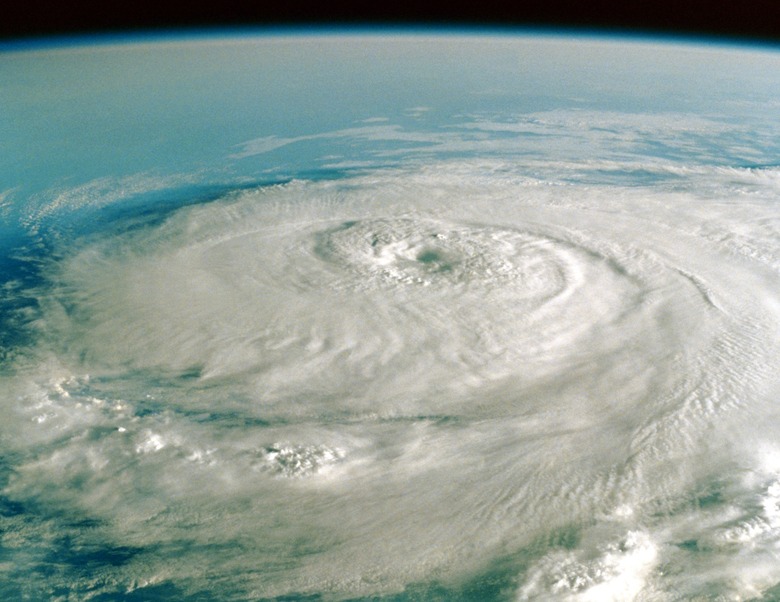What Are The Most Common Months For A Hurricane To Occur?
Hurricanes are tropical cyclones with sustained winds exceeding 74 mph. These storms form in warm, tropical seas and rotate clockwise or counterclockwise depending on which of Earth's hemispheres the storm is in. Storms in the Northern Hemisphere rotate counterclockwise, and those in the Southern Hemisphere rotate clockwise.
Hurricane Season Dates
Hurricane Season Dates
The specific hurricane season dates vary based on which ocean the hurricane has formed in. In the Atlantic Ocean, hurricane season dates from June 1st to November 30th. In the eastern Pacific Ocean, hurricane season dates from May 15th to November 30th. Prior to the year's hurricane season, the National Oceanic and Atmospheric Administration (NOAA) creates a seasonal outlook (listed in Resources section) to predict the severity of that year's hurricanes.
What Are the Hurricane Categories?
What Are the Hurricane Categories?
NOAA uses the Saffir-Simpson Scale to classify hurricanes into different categories based on their wind speed. They categorize storms with sustained wind speeds between 74 and 95 mph as Category 1. Those storms with speeds between 96 and 110 mph are Category 2. Researchers classify all storms greater than Category 2 as "major hurricanes." Category 3 storms have wind speeds of 111 to 129 mph, and Category 4 have wind speeds of 130 to 156 mph. Storms with wind speeds greater than 157 mph are classified as Category 5.
Which Months Have the Most Hurricanes?
Which Months Have the Most Hurricanes?
Not all months during hurricane season have the same likelihood of major hurricane landfall. Between the years of 1851 and 2020, only a single major hurricane has made landfall during the month of June, and only three during the month of July. August and September have the most hurricanes, with activity peaking in September before lowering in October and November.
Even though some months have lower likelihood of major hurricane hits, you should still carefully monitor any tropical cyclone activity reported by the NOAA and take all precautionary measures regardless of the month. Hurricane categories below the "major" designation can absolutely cause significant damage and pose a threat.
Which States Have The Most Hurricanes?
Which States Have The Most Hurricanes?
Where do hurricanes occur the most? The coastal United States don't all face hurricanes on a frequent basis. Florida is the state hit most frequently by hurricanes – by a landslide at that. From 1851 to 2020 Florida has suffered 120 direct hits from hurricanes. Texas follows with 64 direct hits, and Louisiana with 62. North Carolina, South Carolina, Alabama and Georgia come next.
A handful of other states, such as Virginia and New York, also occasionally take direct hits from hurricanes, but they occur less regularly. No other states outside of Florida, Texas, Louisiana, North Carolina, South Carolina, Alabama and Georgia have greater than 20 recorded direct hits from hurricanes in the past 170 years.
How Do I Prepare for a Hurricane?
How Do I Prepare for a Hurricane?
If you live in a state that has frequent direct hits from hurricanes, particularly direct hits from major hurricanes, preparedness can save your life. Before any hurricane threat arises you should create an emergency plan for hurricanes and other disasters. Plan where you will take shelter (don't forget your pets!), which evacuation route you'll take, and how you will communicate with family members. The United States government offers resources to help prepare for hurricanes and other natural disasters (see Resources section).
When preparing for an incoming hurricane, you should collect important documents and pack bags in case you need to evacuate quickly. Ensure you have water, toiletries, non-perishable food items and all medications you might need. Fill your car's gas tank and any portable gas containers for generators. Finally, remove all loose objects and secure all outdoor furniture, boarding windows or using hurricane shutters if necessary.
References
- NOAA: Hurricane Season Information
- NOAA: Months for Landfalling Hurricanes
- NOAA: Hurricane Landfalls by State
- National Weather Service: Hurricane Safety Tips and Resources
- Natural History Museum of Utah: Hurricane Frequently Asked Questions
- Environmental Protection Agency: Climate Change Indicators: Tropical Cyclone Activity
Cite This Article
MLA
Zinni, Yasmin. "What Are The Most Common Months For A Hurricane To Occur?" sciencing.com, https://www.sciencing.com/common-months-hurricane-occur-12317993/. 30 September 2021.
APA
Zinni, Yasmin. (2021, September 30). What Are The Most Common Months For A Hurricane To Occur?. sciencing.com. Retrieved from https://www.sciencing.com/common-months-hurricane-occur-12317993/
Chicago
Zinni, Yasmin. What Are The Most Common Months For A Hurricane To Occur? last modified March 24, 2022. https://www.sciencing.com/common-months-hurricane-occur-12317993/
